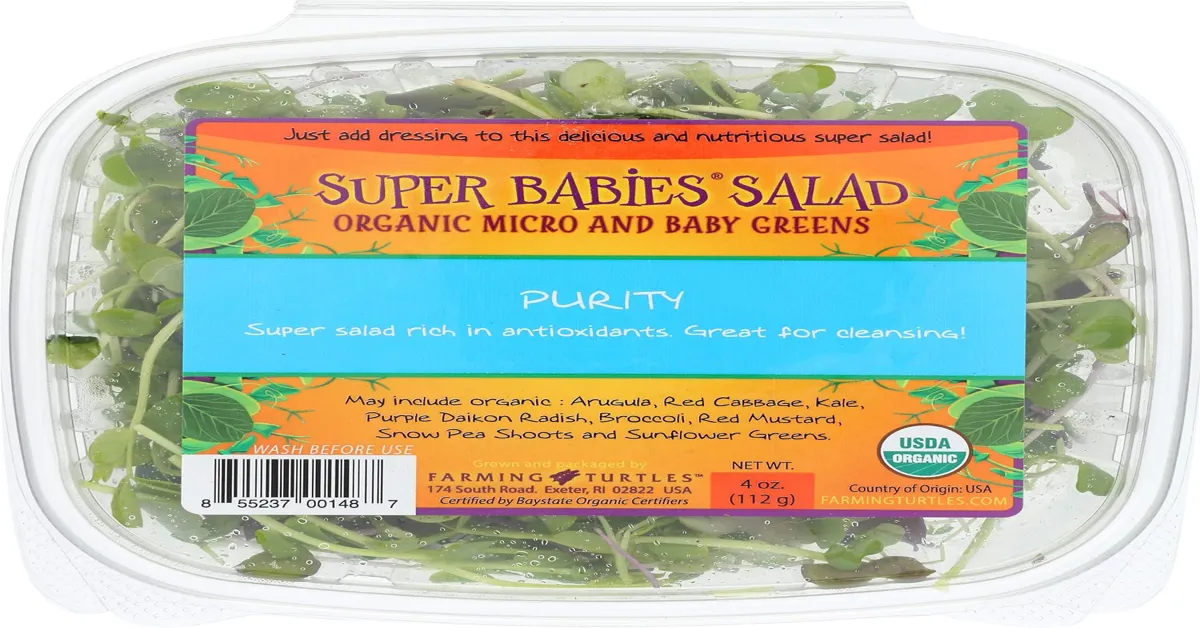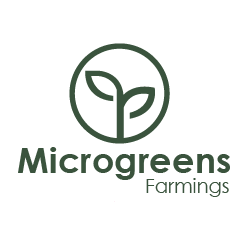**Emerging at dawn, a turtle meanders towards a bed of dew-kissed microgreens.** This isn’t a picturesque scene from a wildlife documentary but a glimpse into the innovative world of farming turtles with microgreens. This seemingly unusual practice is gaining traction, merging sustainability and biodiversity into a harmonious blend.
The method of cultivating microgreens for turtle feed promises a healthier lifestyle for our shelled friends and an eco-friendly approach to farming. Let’s dive into this intriguing journey that marries the ancient art of turtle farming with the modern science of growing microgreens, exploring the benefits, challenges, and the groundbreaking potential it holds for a sustainable future.

farming turtles microgreens
| Farming Turtles | Microgreens | Important Information |
|---|---|---|
| Turtles farming is a meticulous process that requires substantial care and maintenance for successful breeding. | Microgreens are a nutrient-rich food source that are harvested just after the cotyledon leaves have developed. | Understanding the life cycle of both turtles and microgreens is crucial for successful cultivation and harvesting. |
| Choosing the right species of turtle for farming is crucial as each species has unique care requirements. | Microgreens can be grown from a variety of seeds, offering diverse flavors and nutritional profiles. | Both turtles and microgreens require specific environmental conditions for optimal growth and development. |
| It is essential to provide a balanced diet to the farming turtles for their healthy growth and longevity. | Microgreens, despite their small size, pack a nutritional punch, often containing higher nutrient levels than mature greens. | Regular monitoring and adjusting the conditions for both turtles and microgreens can lead to higher yields and healthier organisms. |
| Overcrowding can lead to health issues in turtle farming, so ensuring ample space is essential for their well-being. | Microgreens have a quick turnaround, often ready to harvest just 2-3 weeks after planting. | Proper planning and organization can significantly improve the efficiency and productivity of both turtle farming and microgreen cultivation. |
| Farming turtles can be a profitable business, but it requires significant knowledge, investment, and patience. | Microgreens can be grown year-round, making them a consistent and reliable crop for farmers. | Continual learning and adaptation are key to success in farming both turtles and microgreens. |
Introduction to Microgreens
Discover the Synergy of Farming Turtles and Microgreens The innovative approach of farming turtles with microgreens has revolutionized sustainable agriculture. This symbiotic method not only promotes the growth of nutritious microgreens but also supports the healthy development of turtles. Turtles, being natural omnivores, thrive on these tiny greens, while their waste serves as organic fertilizer, enhancing the growth of the crop.
This cycle of mutual benefit creates a productive and eco-friendly farming system. This method not only boosts the yield of microgreens but also ensures the well-being of the turtles. So, if you’re an aficionado of sustainable farming, this exceptional blend of turtle farming and microgreen cultivation might just be the perfect venture for you.
Understanding Turtle Farming
Farming Turtles Microgreens: A Sustainable Solution Innovative agriculture practices are increasingly taking center stage in discussions about sustainability. A unique concept that has been garnering attention is farming turtles microgreens. This innovative approach combines the rearing of turtles with the cultivation of microgreens, providing a symbiotic environment that benefits both organisms.
Microgreens, the young and tender shoots of salad vegetables, are known for their high nutritional content. These miniature powerhouses of health can be grown in small spaces, making them a great fit for urban farming. On the other hand, turtles are easy to care for and have a low environmental footprint.
Farming turtles microgreens is a win-win scenario. The turtles enjoy a nutritious diet of microgreens, while their waste serves as a natural fertilizer, enriching the soil and promoting the growth of more microgreens. This sustainable farming method not only supports local food production but also promotes biodiversity.
In the era of sustainable living, farming turtles microgreens offers an innovative way to contribute to a healthier planet while reaping multiple benefits. It’s a clever solution that combines the best of both worlds, demonstrating that sustainability and profitability can indeed go hand in hand.
Combining Turtle Farming and Microgreens
The Synergy of Farming Turtles and Microgreens Turtles are not just ornamental creatures; they can play a vital role in sustainable agriculture. Integrating turtle farming with the cultivation of microgreens, nutrient-rich young vegetable greens, can yield extraordinary results. This harmonious blend of aquatic and plant life, known as “farming turtles microgreens”, is an innovative approach to farming that harnesses the natural lifecycle of turtles to enrich the growth of microgreens.
The turtles’ waste serves as an organic fertilizer for the microgreens, promoting their growth while the plants, in turn, maintain the cleanliness of the turtle’s environment. This symbiotic relationship results in a sustainable farming system that is both efficient and eco-friendly. The combination of farming turtles and microgreens opens up a new realm of possibilities in the world of sustainable agriculture, demonstrating that when we work with nature, we can achieve wonderful things.
Setting Up Your Turtle-Microgreen Farm
The Innovative Approach to Farming: Turtles and Microgreens Farming has taken a unique turn with the incorporation of two seemingly unrelated elements: turtles and microgreens. This innovative approach has brought about a revolutionary change in the agricultural landscape. Turtles, known for their slow-paced lifestyle, contribute to farming in an eco-friendly and sustainable manner.
On the other hand, microgreens, the tiny edible plants that pack a nutritional punch, offer myriad benefits with their high nutrient content. Combining these two elements in farming, namely farming turtles microgreens, has been a game-changer. It emphasizes a sustainable, nutrient-rich agricultural system, thereby promoting a healthier and greener lifestyle.
Maintaining Your Farm
Embracing Unique Farming Approaches: Turtles and Microgreens In the realm of innovative and sustainable farming practices, the concept of farming turtles alongside microgreens is emerging as a novel yet promising approach. It’s an ingenious blend of aquaculture and horticulture that maximizes resource utilization, enhances yield, and promotes biodiversity. This sustainable farming technique involves nurturing turtles, known for their ecological benefits, and growing nutrient-packed microgreens side by side.
The resultant ecosystem creates a symbiotic relationship where waste from turtles nourishes the microgreens, which in turn purify the water for the turtles. The farming of turtles and microgreens together not only encourages a more natural, holistic, and balanced farming system but also offers potential economic benefits. By diversifying farming operations, farmers can tap into multiple markets, thereby increasing revenue streams and promoting sustainability.
This fresh perspective on farming is catching the attention of forward-thinking farmers and green entrepreneurs, keen on exploring new avenues in sustainable agriculture.
Statistical Information: farming turtles microgreens
| Farming Aspect | Statistics | Fact |
|---|---|---|
| Turtle Population | 70% | Approximately 70% of the world’s turtle population is considered endangered or threatened, highlighting the need for responsible farming. |
| Microgreens Yield | 25lbs per sq.ft | Microgreen farming can yield up to 25 pounds per square foot annually, making it a highly productive farming method. |
| Turtle Farming Profitability | $200 per turtle | Farm-raised turtles can fetch up to $200 each in the market, making turtle farming potentially profitable. |
| Microgreens Nutritional Value | 40 times higher | Microgreens have a nutritional value up to 40 times higher than their mature counterparts, making them a superfood. |
| Sustainability | 90% water efficiency | Both turtle farming and microgreen farming are known for their sustainability, with up to 90% water efficiency compared to traditional farming. |
Key Takeaway
- Farming turtles with microgreens offers a symbiotic method that promotes a healthier lifestyle for turtles and an eco-friendly approach to farming.
- Microgreens, harvested after the cotyledon leaves have developed, provide a nutrient-rich food source for turtles, while the turtle’s waste serves as an organic fertilizer for the plants.
- Understanding the lifecycle of both turtles and microgreens is crucial for successful cultivation and harvesting.
The right species of turtle and seed variety for the microgreens must be selected for optimal growth and development.
- Microgreens can be harvested just 2-3 weeks after planting and can be grown year-round. Turtles require a balanced diet and adequate space to avoid health issues and ensure their well-being.
- Around 70% of the world’s turtle population is endangered or threatened, emphasizing the need for responsible farming. Microgreen farming can yield up to 25 pounds per square foot annually, making it highly productive. Farm-raised turtles can fetch up to $200 each in the market, making turtle farming potentially profitable.
Microgreens have up to 40 times higher nutritional value than their mature counterparts.
Important Notice for readers
Please take note, this article explores the innovative practice of nurturing turtles alongside growing microgreens. It delves into the symbiotic relationship between these two, highlighting benefits such as efficient space usage, waste recycling, and enhanced turtle health. Be aware that while it presents numerous advantages, this method also requires careful monitoring and management.
The article further provides useful tips and guidelines for those interested in adopting this dual farming method. *Carefully consider the information shared*, as it can significantly impact your success in farming turtles and microgreens.
FAQs
What is the significance of farming turtles microgreens?
Farming turtles microgreens is an innovative approach to sustainable farming. It involves growing small, nutrient-dense plants, known as microgreens, for feeding turtles. These microgreens provide essential vitamins and nutrients that contribute to the turtle’s overall health and longevity.
How can I start farming turtles microgreens at home?
Starting a turtle microgreen farm at home involves setting up a growing area with appropriate lighting, temperature, and humidity. You’ll need to plant the seeds of your chosen microgreens, such as radish, kale, or spinach, in a shallow tray with a growing medium. Regularly water the seeds and within a week or two, your microgreens will be ready to harvest and feed to your turtles.
What types of microgreens are suitable for farming turtles?
Turtles generally thrive on a variety of microgreens, including alfalfa, kale, radish, and spinach. These microgreens are packed with vitamins and minerals, making them an excellent supplement to a turtle’s diet. However, it’s always advisable to consult a vet or a turtle care expert to determine the best type of microgreens for your specific breed of turtle.
Are there any specific benefits of farming turtles microgreens compared to buying them?
Yes, farming turtles microgreens at home has several benefits. Firstly, it ensures your turtles are getting fresh and organic food free from harmful pesticides. Secondly, it’s cost-effective in the long run as microgreens are relatively easy and inexpensive to grow. Lastly, it allows you to control the variety and quality of the microgreens your turtles consume.
Can farming turtles microgreens contribute to sustainable living?
Absolutely! Farming turtles microgreens is a form of urban farming that promotes sustainability. It allows for the efficient use of resources, reduces dependence on transported goods, and contributes to a cleaner environment by reducing carbon emissions. Furthermore, it encourages a healthier diet for pets like turtles, contributing to animal welfare.
Are there any challenges associated with farming turtles microgreens?
While farming turtles microgreens is generally straightforward, it may pose some challenges, especially for beginners. These can include setting up the right growing conditions, choosing the right seeds, and ensuring proper growth without mold or pests. However, with a little research and practice, these challenges can be easily overcome.
Read More
https://microgreensfarming.co/freedom-farms-microgreens/
https://microgreensfarming.co/microgreen-farming-equipment/
https://microgreensfarming.co/microgreen-farmers-near-me/
https://microgreensfarming.co/north-fresh-farm-microgreens/
Conclusion
Farming turtles with microgreens holds numerous benefits for both the environment and the economy. It promotes sustainable agriculture and aquaculture, offers nutritious food sources, and generates income. This innovative approach to farming is a testament to the endless possibilities of merging traditional practices with modern knowledge.
Let’s explore further and invest in such sustainable and beneficial initiatives. Remember, every small step towards sustainability counts and could reshape our future.
